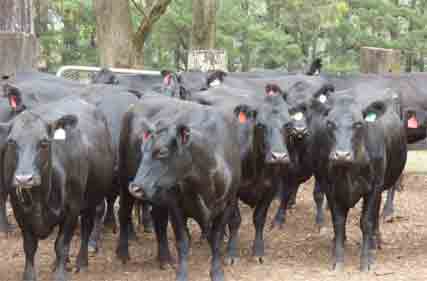
Research has shown that big cows or high lactation cows have higher nutrient requirements and that often the difference in nutrient demand due to the animal’s weight is unappreciated.
Find the optimum cow size that maximises profit on your farm’ was the message delivered during a recent Angus CONNECT presentation from University of Kansas Professor and Head, Dr Bob Weaber, who brought an interesting U.S. perspective to the topic of mature cow size.
As part of the Angus CONNECT Research and Development Update – Autumn 2021, Dr Weaber explained that over the last 30 years, seedstock breeders of every major U.S. beef breed had increased growth and lactation potential.
Dr Weaber said the relationship between mature weight and yearling weight is about 0.6, so roughly about a third of the variation in mature weight is described by change in weaning weight and selection criteria.
‘So, if we don’t put downward pressure on mature weight to maintain it at a specific level, as we continue to select for increase growth potential in animals we see an increase in mature weight’.
Research has shown that big cows or high lactation cows have higher nutrient requirements and that often the difference in nutrient demand due to the animal’s weight is unappreciated.
Due to most cow-calf operations running within a ‘fixed resource’ system, that is a system without significant supplementary feeding, the increase in nutrient requirement means the cow requirements may exceed the nutrient availability of the environment within which they live and subsequently cause a reduction in body condition. It has been well demonstrated that lower body condition effects fertility, a critical feature for success within cow-calf systems.
‘Having cows ideal in terms of nutrient requirement or nutrient demand in their production system is critical for profitability’ Dr Weaber said.
Dr Weaber explained that ‘often an increase in mature cow weight is tolerated’, due to a perceived increase in the weaning weight of the calf, however research from the U.S. has demonstrated that this isn’t the case.
The work found that for every 100lb (or 45kg) increase in mature cow weight, the calf weight increased by 10lb (or 4.5kg). This increase in potential revenue from the calf, in most cases, doesn’t offset the significant increase in feed requirements of the cow.
Acceptable ranges for cow size will increase as the nutrient availability and productivity of the environment increases.
Therefore, to understand what the optimum cow size is for our environment, we need to understand both the nutrient availability or productivity of our farm and understand the mature weight and body condition of the herd.
This information, combined with an understand the animals that are working or not working in our system, enables us to understand the suitability of our cows for their environment and ultimately, optimize cow size for the environment’ through the selection and breeding decisions we make.
-Angus Australia
